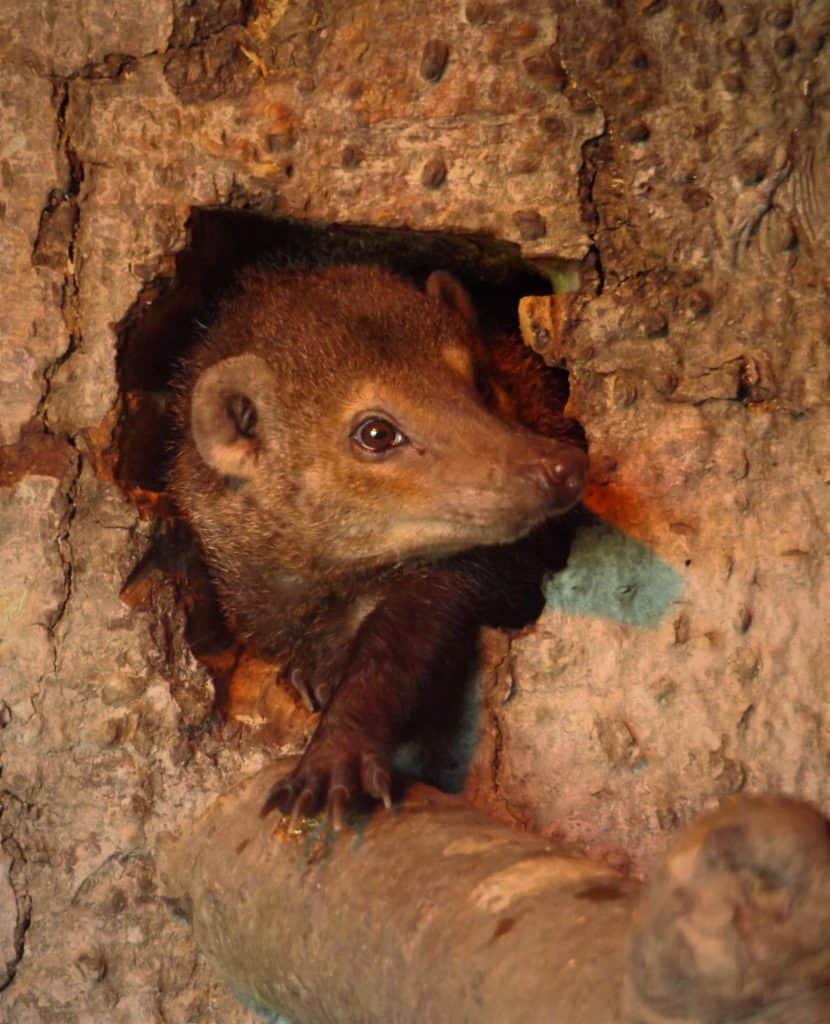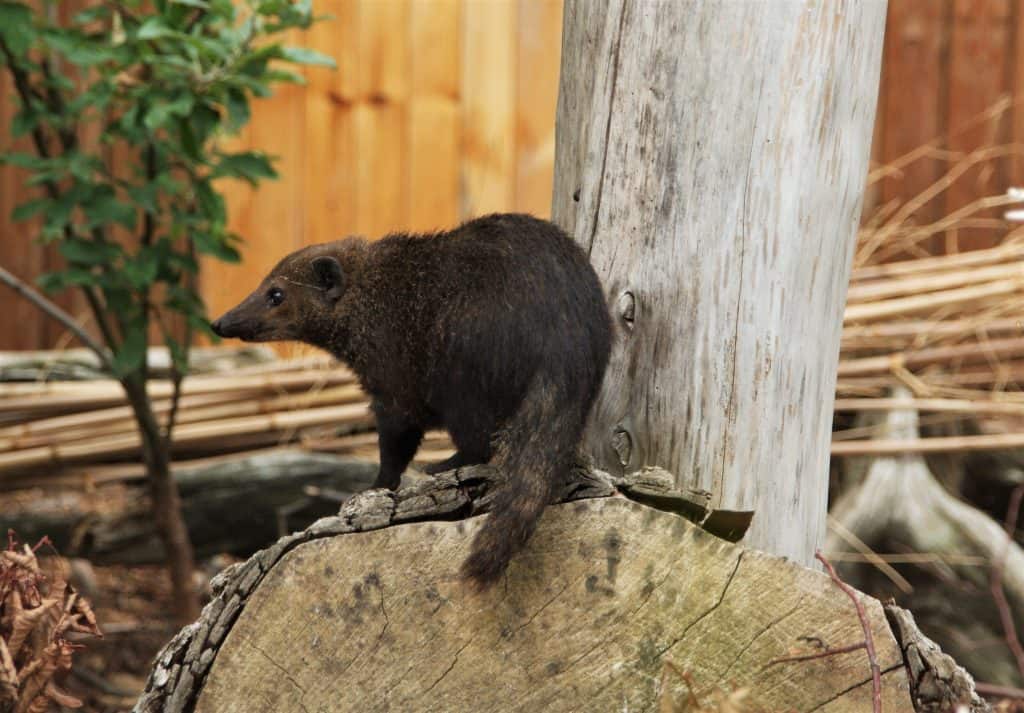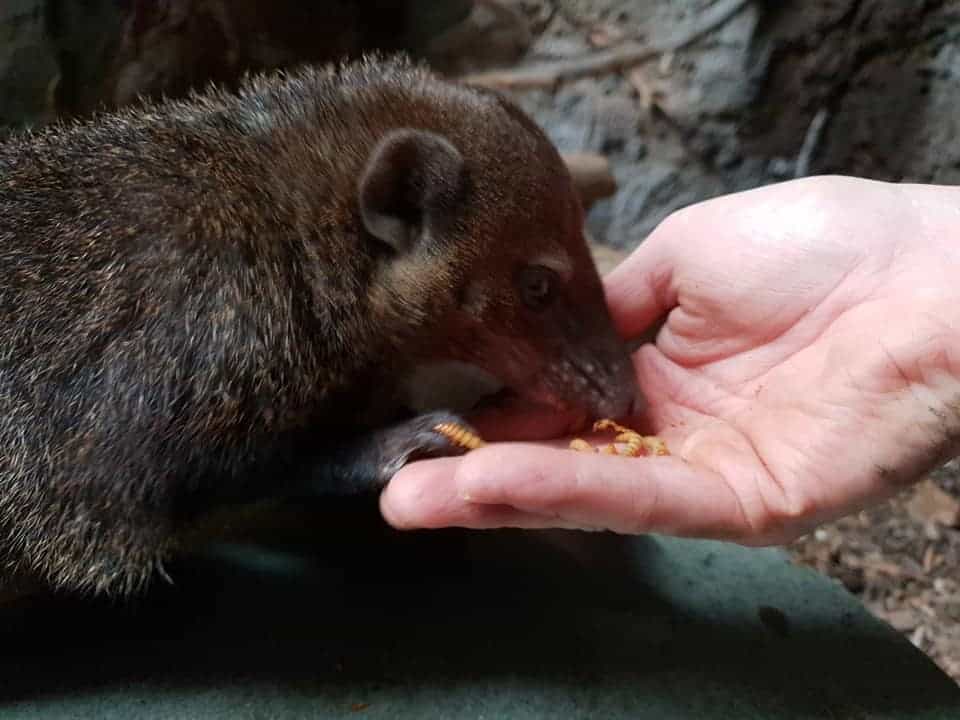Let me introduce you to Molly, Markus and Albert our group of Common Cusimanse. They joined us in early 2019 and can be seen next to the smooth coated otters. Definitely for me, along with the Egyptian fruitbats, these guys are one of the most overlooked or forgotten about species in the park by visitors. People don’t really know what they are or who they are or where they come from. So once again its time for me to spread some awareness and hopefully teach you a thing or two in the process.

Where do I live?
A member of the mongoose family, they are originally found in West Africa; Guinea, Sierra Leone, Liberia, Côte d’Ivoire and Ghana. They mainly live in rainforest habitats, but will also inhabit savannahs, logged forests and plantations.
What do I eat?
They use their long slender snout and claws to forage for prey on the forest floor, in rotting logs and in thick vegetation. Being an omnivore they will normally feed on a wide variety of vertebrates and invertebrates including earthworms, spiders, grasshoppers, frogs, birds and snakes and they are also partial to eating fruit and berries too. A question I often get asked is how many teeth do they have? So I have also researched the amount for you- it’s 36 so just a few more than us.

Homelife?
They basically live a nomadic life and will often move from one location to another to find food and avoid predators. If the group have young, adult members of the group will often carry them on their backs as they are unable to keep up. Only the primary members of the family group are allowed to breed. Females can have up to three litters per year with 2-4 pups per litter. The young of this species are born completely helpless with their eyes closed, not opening until they are about 12 days of age. They are weaned at about 3 weeks. In captivity they can live up to 10 years. Molly is the oldest in our group and she will be celebrating her 10th birthday next month.
Communication?
Cusimanse will communicate with one another using a variety of sounds. These include chirps, barks and growls due to their poor visibility and for maintaining contact in the dense rainforest understory while traveling.

Predators?
Cusimanse have a range of predators including large carnivores, and raptors such as the crowned hawk eagle.
Conservation status?
Currently they don’t face any major threats and are fairly common. They are found in a variety of habitats including a number of protected areas. However, in some regions they also suffer from hunting. According to IUCN, Common Cusimanses are widespread throughout their range but no overall population estimate is available.
Currently, this species is classified as Least Concern (LC) on the IUCN Red List.
Meet the Cusimanse
Here at the park you can meet our cheeky group of cusimanse on our cusimanse experience. As a close relative of the meerkat this is a great encounter to try if you’ve already met our meerkat mob and are looking for something similar.
Hopefully I will get to introduce you to our Molly, Albert and Markus in person soon.



